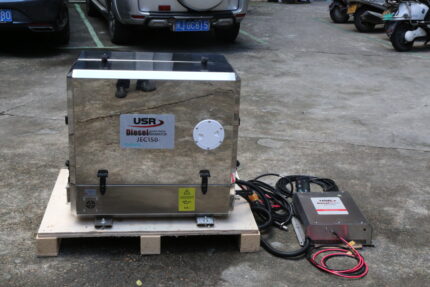What should be done in the daily maintenance and management of ship-borne generators
The daily maintenance and management of ship-borne generator is the key to ensure its stable operation and prolong its service time. The following are some key maintenance management issues:From the demand side, yacht generator More in line with the psychological expectations of consumers, willing to pay for the things they like. https://usrpower.com/product/usr-pmg-marine-generator-jec80-power-8kva/
I. General Maintenance of Ship-borne Generator
Keep clean:
Always clean the dust and dirt near the generator to avoid the accumulation of water, oil and corrosive gases, so as to avoid damaging the insulation of the generator winding.
Clean the ventilation duct and keep it unobstructed to ensure the normal ventilation and cooling of the generator. The temperature of cooling air shall not be too low to prevent condensation of water droplets on windings and other conductive devices.
Corrosion and rust prevention:
Check whether the paint on the surface of the generator falls off. If there is rust, remove rust in time and apply antirust paint.
For parts such as slip rings, the surface should be kept smooth and cleaned and inspected regularly.
Second, the ship-borne generator regular inspection and maintenance
Pre-startup inspection:
Before the ship-borne generator is put into operation, it should be carefully checked whether there are sundries in it to prevent foreign objects such as screws, tools and rags from falling into it.
Use dry compressed air to remove dust from all parts of the generator.
Check the lubrication of generator bearings to ensure that the quality and quantity of lubricating oil or grease meet the maintenance requirements.
Check the connection between the generator and its prime mover to ensure that their axes are in the same straight line.
Check whether the rotor is flexible and the bearing quality.
Measure the insulation resistance of stator and rotor lines to ensure that it is not lower than the specified value.
In-service monitoring:
Monitor the temperature rise, voltage, power factor, grid frequency and other parameters of the ship-borne generator to ensure its operation within the normal range.
Regularly check the rotation of the rotor, the working conditions of the slip ring and the carbon brush, and whether there are any abnormal phenomena such as sparks.
III. Dismantling and Drying of Ship-borne Generator
Precautions for disassembly:
When disassembling and assembling the ship-borne generator, care should be taken not to damage the components, especially the stator coil and rotor protruding out of the frame.
When the rotor is taken out, cardboard should be placed between the stator and rotor of the motor to prevent damage to the core and winding.
When binding the rotor with steel cables, it should be ensured that the steel cables do not touch the rotor journal, slip ring, transfer lead and other parts.
Drying treatment:
For newly installed or long-term disabled generators, they should be dried before operation.
If the generator is damp, it can be dried by hot air method, short-circuit current drying method or on-load drying method.
During the drying process, the temperature and insulation resistance should be measured regularly to ensure the drying effect.
Four, ship-borne generator lubrication and replacement
Bearing lubrication:
For sliding bearings lubricated by oil ring, the oil quantity should be kept moderate to avoid oil injection during operation.
For motors with ball bearings or roller bearings, the grease should be changed regularly.
Parts replacement:
Check the parts of the generator set regularly, such as belts and filter elements, and replace them in time if they are worn.
Check and replace lubricating oil and coolant regularly to keep the unit in good condition.
V. Performance Test and Record of Ship-borne Generator
Performance test:
Regularly test the performance of the ship-borne generator, including whether the output voltage, frequency and other parameters meet the standards.
Find potential problems in time and deal with them through performance testing.
Record maintenance information:
Record the time, content, replaced parts and problems found in each maintenance.
Establish a complete maintenance file for subsequent analysis and improvement.
To sum up, the daily maintenance management of ship-borne generators involves many aspects, including general maintenance, regular inspection and maintenance, disassembly and drying, lubrication and replacement, and performance testing and recording. The implementation of these maintenance and management measures can improve the stability of the generator and prolong its service time, and provide a strong guarantee for the normal operation of the ship.